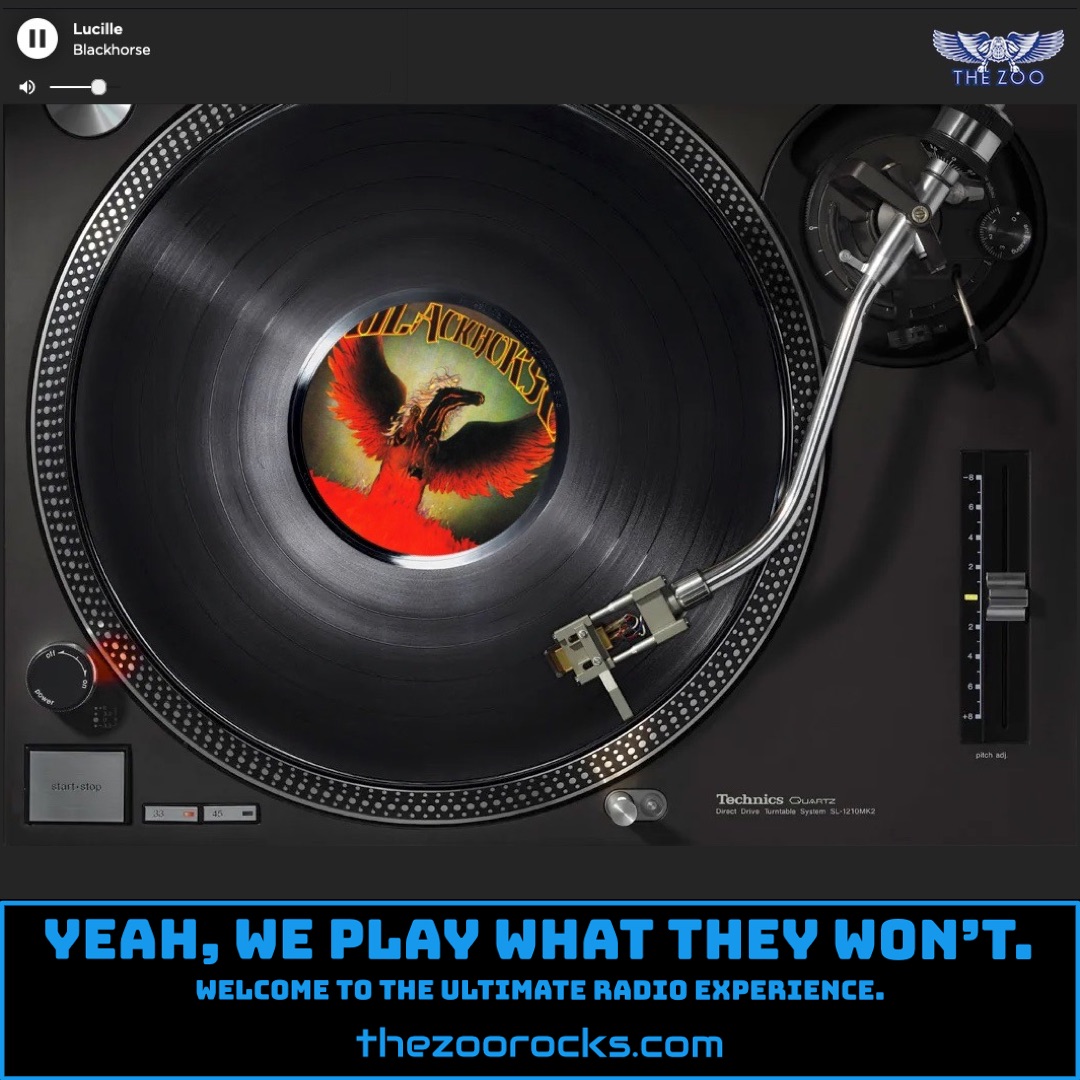Waitin' For the Bus / Jesus Just Left Chicago
ZZ Top
Zoo Freaks, get ready for some righteous vibes as the Zoo Crew spins the iconic "Waitin' For the Bus / Jesus Just Left Chicago" by ZZ Top from their 1973 album Tres Hombres. This track is a seamless two-fer, with the songs blending together so smoothly that radio stations have played them as one for decades. But here’s the wild part: that slick segue wasn’t planned! In an interview with Jeb Wright of Classic Rock Revisited, ZZ Top’s lead guitarist Billy Gibbons revealed that the songs were written separately, but the album’s engineer, Terry Manning, accidentally spliced them together while trying to cut out blank tape. The result? A happy mistake that became one of the band’s signature sounds. Gibbons noted, “It just seemed to work,” and fans clearly agree, as it’s the band’s third most-played concert song, right behind “La Grange” and “Tush.”
Another cool tidbit comes from a 1985 Spin magazine interview with bassist Dusty Hill, who shared that “Waitin’ For the Bus” is a working man’s anthem inspired by real life. Hill once took a bus from Houston to Austin and was struck by the unique characters he met, saying, “I like to people watch. I love bus stations and train stations. The thing about a bus is who you have to sit beside.” That raw, gritty vibe of everyday folks is baked into the song’s groove. As for “Jesus Just Left Chicago,” Gibbons got the title from a teenage friend nicknamed R&B Jr., who blurted out the phrase during a phone call. Gibbons turned it into a bluesy, spiritual-tinged track influenced by Robert Johnson, adding quirky measures to the standard 12-bar blues to make it “weirder,” as he told Classic Rock Revisited. Rolling Stone ranks this duo in the top 10 of ZZ Top’s essential songs, and it’s no wonder why—it’s a boogie-rock masterpiece.
Now, let’s rewind to how ZZ Top, that little ol’ band from Texas, got their start. Formed in Houston in 1969, the trio—Billy Gibbons (vocals and guitar), Dusty Hill (bass and vocals), and Frank Beard (drums)—came together after Gibbons’ psychedelic rock band, Moving Sidewalks, broke up. Gibbons was already making waves, having opened for Jimi Hendrix in the late ’60s, but he wanted a raw, blues-based sound. He hooked up with Hill and Beard, and by 1971, they’d signed with London Records and dropped their debut, ZZ Top’s First Album. Their early records laid the groundwork, but it was Tres Hombres in 1973 that catapulted them to stardom, hitting number 8 on the Billboard 200 and cementing their reputation for gritty riffs and sly lyrics. Their live shows, packed with Texas swagger and humor, made them a North American sensation by the mid-’70s, setting the stage for their later MTV-fueled global fame with albums like Eliminator.
For all you Zoo Freaks wanting to dive deeper, check out ZZ Top’s official website for tour dates, merch, and news. Stay connected with the band on their Facebook, Instagram, and X accounts, where they share updates like their 2019 documentary That Little Ol’ Band From Texas, which chronicles their rise to fame. Fans can also join the ZZ Top Fan Club on Facebook to swap stories and celebrate the band’s legacy. For more fan-driven content, head to Dave Gott’s ZZ Top page, a treasure trove of album details and reviews. So, keep those dials locked on THE ZOO, and let ZZ Top’s boogie keep you groovin’!

